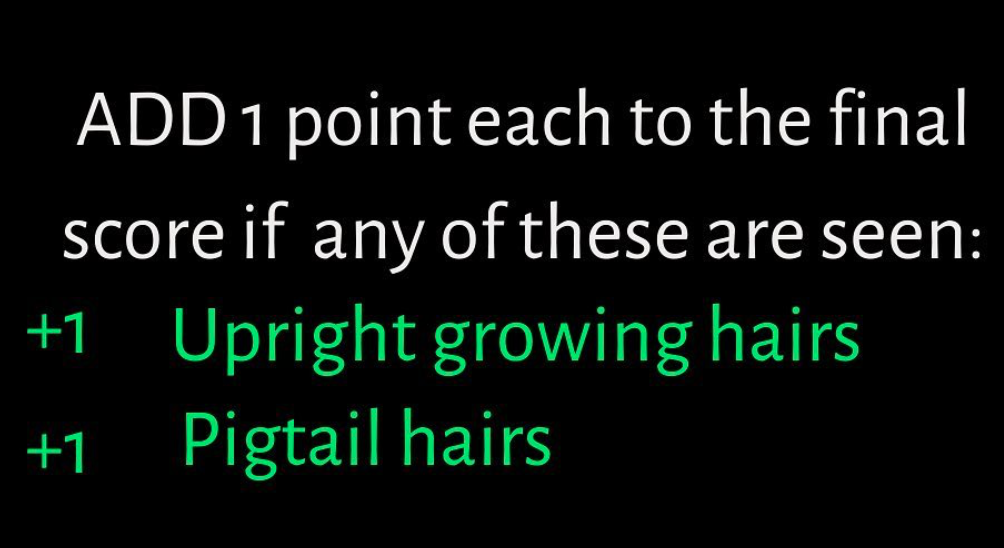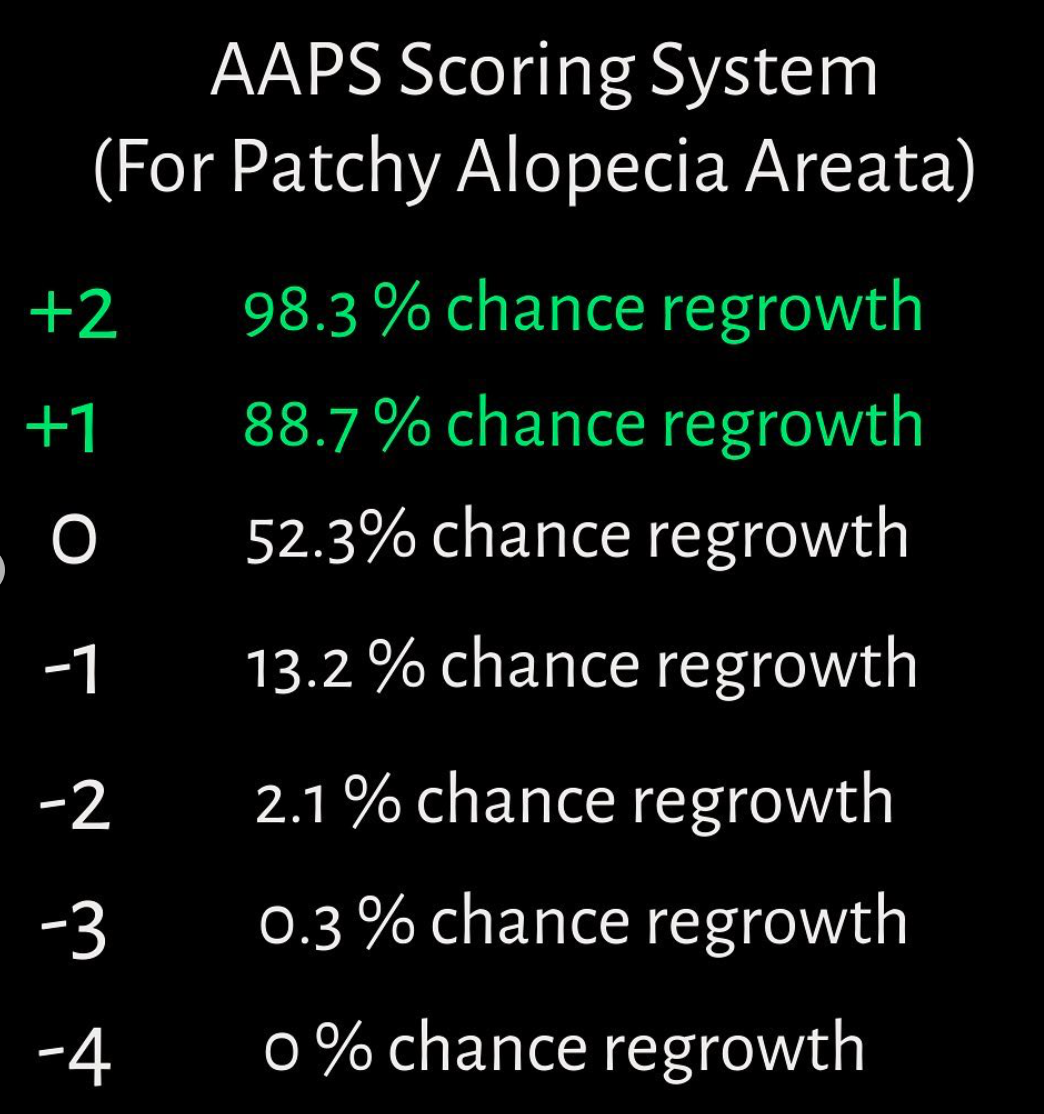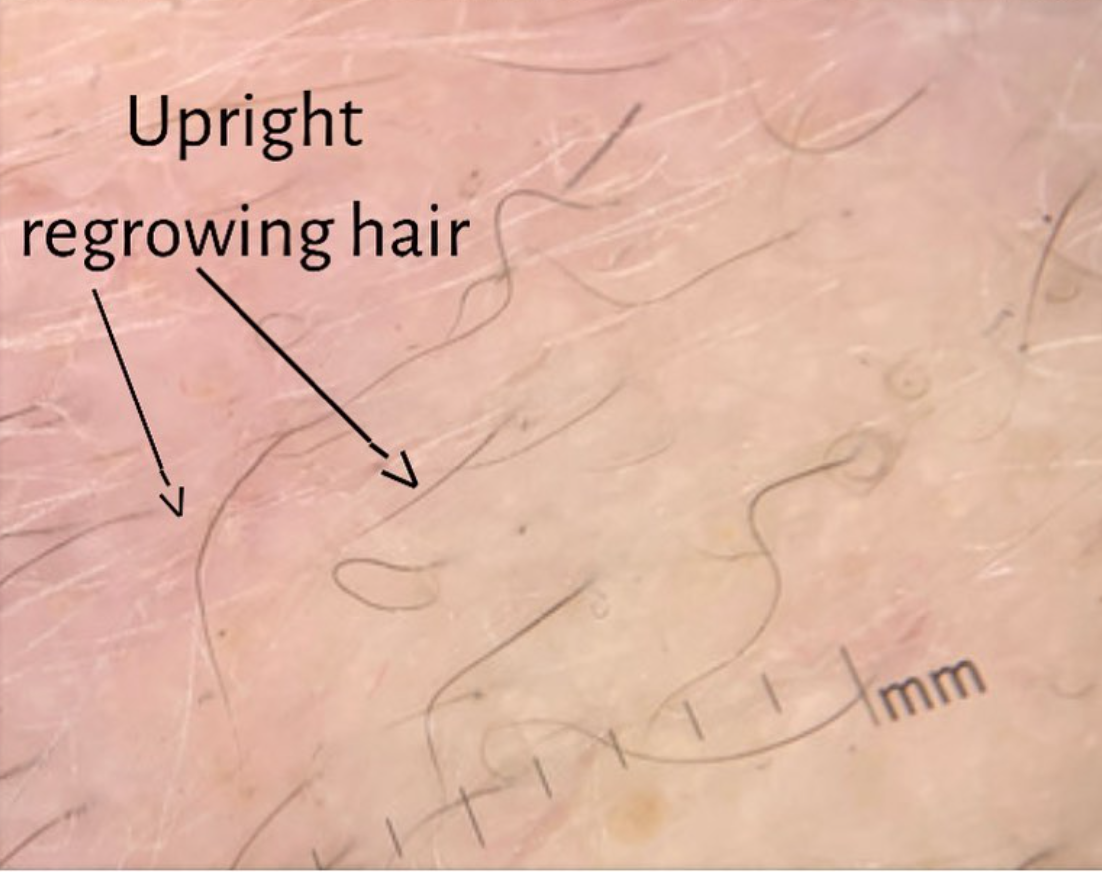The Alopecia Areata Predictive Score (AAPS): A Helpful Tool for Patchy Alopecia Areata
A Closer Look at the Alopecia Areata Predictive Score (AAPS)
Trichoscopy is a technique to examine the hair and scalp that involves the use of a hand held dermatoscope. For patients with alopecia areata, recent studies have suggested that the trichoscopic appearance of the scalp about two months after any treatment has been started can be used to predict if that treatment is likely to help or not.
The trichoscopic appearance can be formally evaluated in what has been termed the Alopecia Areata Predictive Score or “AAPS.” This is a six point scoring system that prompts the clinician to assign points if upright regrowing hairs and pigtail hairs are seen on trichoscopic exam (positive signs) and subtract points if exclamation hairs, tapered hairs, broken hairs or black dots are seen (negative signs).
In a recent study, Anna Waśkiel-Burnat and colleagues set out to apply the AAPS to 65 patients with patchy alopecia areata who underwent treatment. Trichoscopy was performed at baseline and 2 months. The authors showed that a final score of 1 or 2 tells the clinician that the chosen treatment seems to be working and continuing the same treatment plan is reasonable. A final score of -1, -2, -3 , -4 indicates that the current treatment plan is unlikely to help and that a new treatment plan is needed.
THE AAPS: WHAT CONSTITUTES POSITIVE POINTS?
THE AAPS: WHAT CONSTITUTES NEGATIVE POINTS?
THE FINAL SCORE: UNDERSTANDING THE SIGNIFICANCE OF THE AAPS
EXAMPLES OF AAPS “POSITIVE” CRITERIA: UPRIGHT REGROWING HAIRS AND PIGTAIL HAIRS
Patients with upright regrowing hairs on trichoscopy at the two month mark following treatment are given one point in the calculation of the AAPS.
Patients with pigtail hairs on trichoscopy at the two month mark following treatment are given one point in the calculation of the AAPS.
CONCLUSION
The AAPS is interesting and certainly warrants further study with larger numbers of patients. It appears to be a useful evaluation tool for patients with “patchy” alopecia areata. It does not apply to advanced cases of alopecia areata or to alopecia totalis or universalis.
Reference
Waskeil et al. Alopecia areata predictive score: A new trichsocopy- based tool to predict treatment outcome in patients with patchy alopecia areata. J Cosmet Dermatol 2020
This article was written by Dr. Jeff Donovan, a Canadian and US board certified dermatologist specializing exclusively in hair loss.





